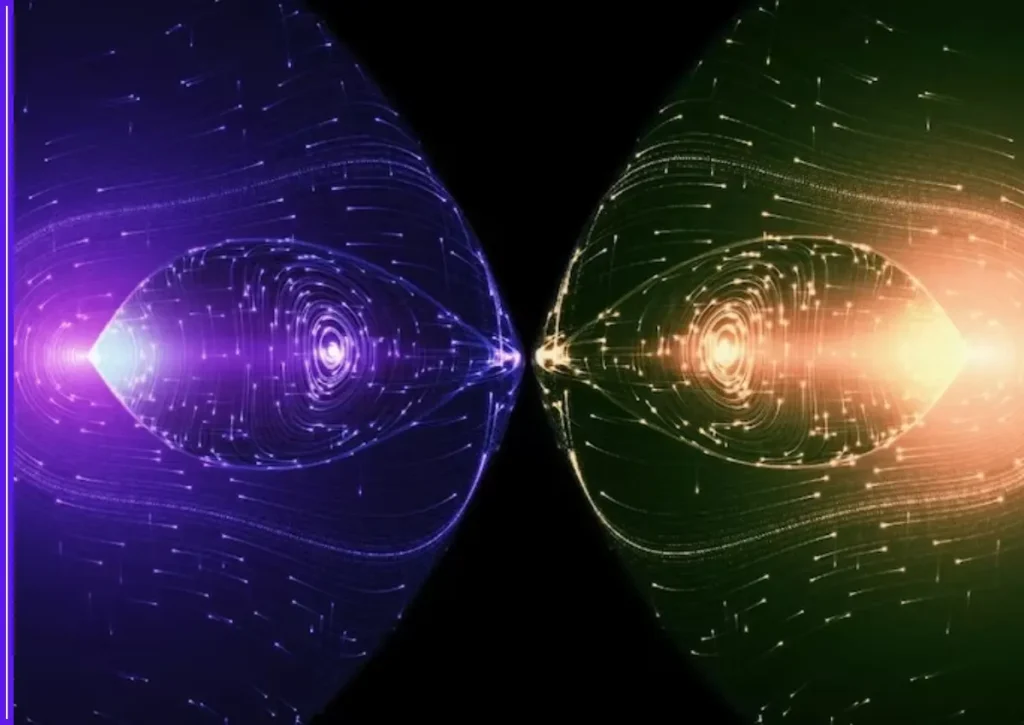One of the most puzzling questions in modern physics is why our universe is made almost entirely of matter, even though the Big Bang should have created equal amounts of matter and antimatter. This imbalance, known as the antimatter mystery, challenges our understanding of the cosmos and continues to drive scientific investigations worldwide.

The Matter-Antimatter Conundrum
According to the Standard Model of particle physics, every particle of matter has a corresponding antiparticle. These antiparticles have the same mass but opposite charge. For instance, the antiparticle of the electron is the positron, which carries a positive charge instead of a negative one.
Theoretically, the Big Bang — the violent expansion that created our universe around 13.8 billion years ago — should have generated equal amounts of matter and antimatter. But if that were true, they would have annihilated each other completely upon contact, releasing pure energy and leaving no atoms to form stars, planets, or people. Yet here we are — in a universe made almost entirely of matter.
This cosmic discrepancy is what scientists call the baryon asymmetry problem — essentially, why did matter win?
Current Scientific Theories
To address this mystery, physicists have proposed several theories. One idea is CP violation, which suggests that the laws of physics may not apply equally to matter and antimatter. In experiments involving subatomic particles like kaons and B mesons, researchers have observed subtle differences in the way matter and antimatter decay. These differences, while significant, are still too small to account for the matter-dominated universe.
Another theory posits that an unknown mechanism occurred shortly after the Big Bang that tipped the balance slightly in favor of matter. This unknown process may have occurred during the inflationary epoch, when the universe expanded rapidly, or during baryogenesis, the period when particles gained mass.
Some physicists also speculate that antimatter might exist in hidden regions of the universe — perhaps entire galaxies made of antimatter — but so far, we have no observational evidence of this. Any contact between matter and antimatter would produce gamma rays, and astronomers haven’t found these signs in expected quantities.
Breakthrough Experiments and Global Efforts
Cutting-edge experiments around the world are attempting to uncover clues. At CERN (European Organization for Nuclear Research), scientists are conducting studies using the Large Hadron Collider and the ALPHA experiment, which traps antihydrogen atoms to analyze how they behave under gravity and other forces.
In 2023, researchers announced that antimatter falls at the same rate as matter in Earth’s gravity, ruling out one major theory that antimatter might behave differently under gravitational fields.
In Japan, the SuperKEKB collider is investigating B mesons and CP violation with higher precision. In the U.S., the Fermilab and other laboratories continue neutrino experiments, which might hold the key to understanding the imbalance, especially if neutrinos and antineutrinos behave differently.
The mystery also ties into efforts to unify the four fundamental forces — gravity, electromagnetism, weak nuclear force, and strong nuclear force — and even into the realm of string theory and supersymmetry.
Why the Mystery Matters
The implications of solving the antimatter mystery are profound. It would not only help explain how the universe formed and why it evolved the way it did, but it could also unlock new physics beyond the Standard Model. Understanding matter-antimatter asymmetry might one day lead to new energy sources, deeper insights into black holes, or even the key to multiverse theories.
It could also give us more context about dark matter and dark energy, which together make up 95% of the universe’s content — yet remain largely unexplained.
The Road Ahead
Despite decades of research, the antimatter mystery remains one of the greatest unsolved questions in science. But progress continues.
Every particle collision in a lab, every anomaly in cosmic rays, and every experiment trapping antimatter atoms brings us a step closer to the answer.
For now, we live in a universe where matter reigns supreme — a fluke that made human life possible. But understanding why could open the next great chapter in our understanding of reality itself.









